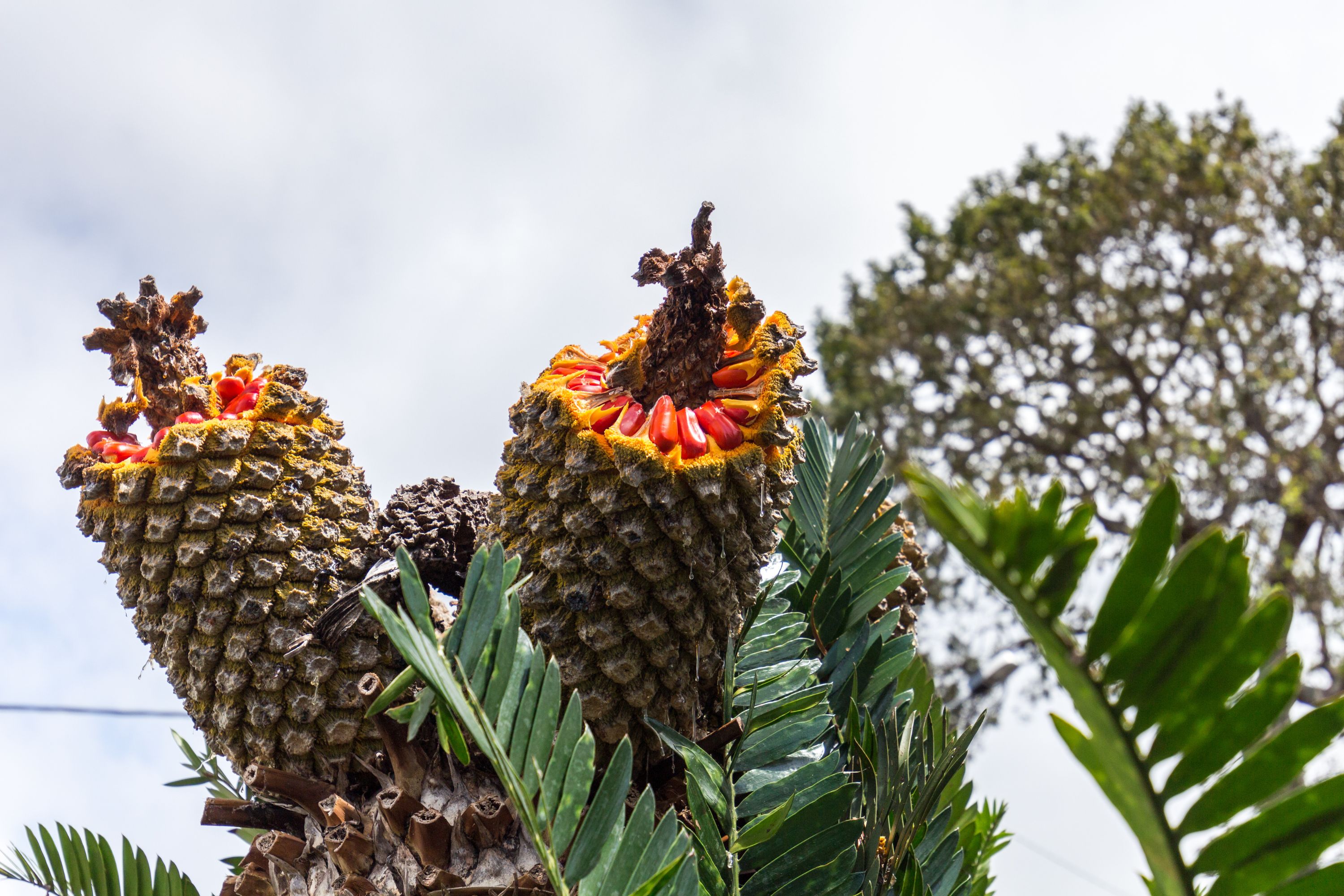Bread Trees
(Encephalartos transvenosus)

Description
Encephalartos transvenosus is a palm-like cycad in the family Zamiaceae, with a localized distribution in Limpopo, South Africa. Its common names, Modjadji's cycad or Modjadji's palm, allude to the female dynasty of the Lobedu people, the Rain Queens, whose hereditary name is Modjadji. The queen resides near a valley (of late a nature reserve) which is densely forested with these cycads, which they protected and hold sacred.The species name transvenosus refers to the fine network of veins between the main veins. These can be seen when the leaf is held up to the light. The tree grows up to twelve metres tall with a thick trunk deeply scored in a netted pattern. This is crowned by nearly straight, shiny, spiny pinnate leaves up to two and a half metres long. The leaflets are broad, the middle ones up to about three centimetres in width, slightly curved and with small marginal teeth. Two to four large cones are borne in the heart of the leaves. The female cone may reach eighty centimetres long, weigh thirty four kilograms and have brilliant orange-red seeds. Encephalartos is a genus of cycad native to Africa. Several species of Encephalartos are commonly referred to as bread trees, bread palms or kaffir bread, since a bread-like starchy food can be prepared from the centre of the stem. The genus name is derived from the Greek words en (within), kephalē (head), and artos (bread), referring to the use of the pith to make food. They are, in evolutionary terms, some of the most primitive living gymnosperms. All the species are endangered, some critically, due to their exploitation by collectors and traditional medicine gatherers. The whole genus is listed under CITES Appendix I which prohibits international trade in specimens of these species except for certain non-commercial motives, such as scientific research. Several of the species possess stout trunks. In E. cycadifolius, the main trunks are up to 10 feet (3.0 m) high, and several of them may be united at a base where a former main trunk once grew. The persistent, pinnate leaves are arranged in a terminal spreading crown, or ascending. The rigid leaflets are variously spiny or incised along their margins. The leaflets have a number of parallel veins and no central vein.
Taxonomic tree:







